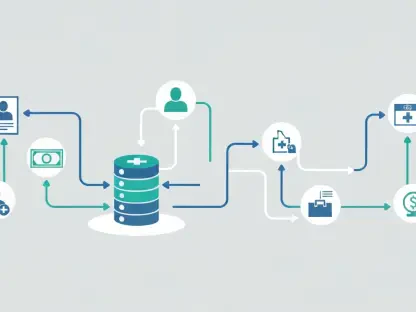The software development landscape is rapidly evolving, with new trends and innovations emerging each year. As we look ahead to 2025, industry experts have shared their insights on what to expect in the world of software development. From the rise of AI to the evolution of DevSecOps, these predictions offer a glimpse into the future of the industry.
The Rise of Software Engineering Intelligence (SEI)
SEI Replacing Value Stream Management
Derek Holt, CEO of Digital.ai, predicts that Software Engineering Intelligence (SEI) will become a dominant force in 2025, replacing the declining Value Stream Management. SEI focuses on measuring the end-to-end business processes of software development and delivery, aiming to enhance continuous improvement and improve developer experiences. This shift will harness the potential of AI-powered software development and delivery, making SEI a critical component of the industry. By integrating AI, SEI will offer more precise insights into workflow inefficiencies and suggest areas needing optimization. Consequently, developers can expect to see a significant enhancement in their day-to-day operations, making software development both more agile and responsive to changing business needs.
Enhancing Continuous Improvement
SEI’s emphasis on continuous improvement will lead to more efficient and effective software development processes. By leveraging AI, SEI will provide valuable insights into the development lifecycle, helping teams identify areas for improvement and optimize their workflows. This focus on continuous improvement will ultimately result in higher-quality software and better developer experiences. Machine learning algorithms will likely play a vital role in this ongoing optimization, utilizing historical data to predict potential bottlenecks and recommend effective solutions. As a result, the development cycle will become more predictable, reducing both time-to-market and development costs, which will be advantageous for both developers and stakeholders.
AI-Generated Code and Its Challenges
The Pitfalls of AI-Generated Code
Emily Nakashima, VP of engineering at Honeycomb, notes that while AI-generated code was a significant focus in 2024, businesses spend more time on software maintenance and operations than on authorship. She foresees 2025 as a year of increased awareness about the pitfalls of AI-generated code in production, such as its unpredictability and costliness. This awareness will drive advances in best practices for observing Large Language Models (LLMs) and addressing the challenges associated with AI-generated code. Companies will need to invest in better monitoring and diagnostic tools to mitigate these risks, enabling quicker identification of issues as they arise. The shift will also encourage a focus on the development of more robust validation techniques.
Security Incidents and Best Practices
As AI-generated code becomes more prevalent, the industry will need to develop best practices for observing and managing LLMs. Nakashima anticipates notable security incidents due to AI-generated code, highlighting the importance of robust security measures and practices. By addressing these challenges, the industry can mitigate the risks associated with AI-generated code and ensure more secure software development. Developers and security experts may need to work closely to develop new frameworks for code validation, particularly in the context of AI-driven automation. Collaboration between these teams will be crucial to identify vulnerabilities early in the development process and implement safeguards that can prevent exploitation.
The Evolution of DevSecOps
Shift Everywhere Approach
Dylan Thomas, senior director of product engineering at OpenText Cybersecurity, highlights the evolution of DevSecOps towards a “shift everywhere” approach. This approach involves using appropriate tools at different stages of the DevSecOps cycle to enhance efficiency and security. Lightweight analysis in Integrated Development Environments (IDEs), automation in pull requests, and CI/CD pipelines, particularly for API security testing, will become more common. This method offers a more nuanced approach to security, ensuring that developers can integrate best practices without overwhelming themselves with additional burdens. The modularity will allow teams to apply tailored approaches for different aspects of development.
Enhancing Efficiency and Security
The “shift everywhere” approach will lead to more efficient and secure software development processes. By integrating security measures throughout the development lifecycle, organizations can identify and address vulnerabilities early on, reducing the risk of security incidents. This approach will also streamline workflows, making it easier for teams to develop and deploy secure software. For example, API security testing can be automated within CI/CD environments, catching potential issues before they reach production. This way, both quality assurance and security teams can work in tandem, fostering an environment where security is part of the development DNA rather than an afterthought.
The Impact of AI on Fraud Detection and Digital Currencies
Neuro-Symbolic AI for Fraud Detection
Jans Aasman, CEO of Franz Inc., discusses the increased sophistication of fraud detection as digital currencies grow. He predicts that emerging AI forms like Neuro-Symbolic AI (NSAI) will play a crucial role in identifying suspicious transactions across decentralized platforms. By combining pattern recognition, logical reasoning, and language understanding, NSAI will enhance the industry’s ability to detect and prevent fraud. This innovation will not only benefit digital currency platforms but will also have broader applications, including in traditional financial systems. Enhanced fraud detection capabilities will likely contribute to higher trust and wider adoption of digital currencies.
The Growth of Digital Currencies
As digital currencies continue to grow, the need for advanced fraud detection methods will become increasingly important. NSAI’s ability to identify suspicious transactions will help protect users and maintain the integrity of digital currency platforms. This growth will drive further innovation in AI and fraud detection technologies, shaping the future of the industry. With the adoption of these technologies, regulatory bodies may also find better ways to monitor transactions, creating a more secure environment for all participants. This dual approach of technology and regulation can help in systematically curbing fraudulent activities, making digital currencies a more viable alternative for everyday transactions.
Data Management and Interoperability
The Competitive Race in Data Catalog Space
Alex Merced, Senior Tech Evangelist at Dremio, sees a competitive race in the data catalog space driven by the growth of hybrid and multi-cloud ecosystems. Organizations will demand seamless interoperability, leading to innovations in governance, lineage, and user-defined functions (UDFs). Apache Iceberg, with its hybrid catalog capabilities, will redefine standards for open table formats and shape the future of data portability. These innovations are expected to transform how companies manage their data, promoting an environment where data sharing and interoperability become effortlessly achievable. In turn, this will facilitate more real-time analytics and decision-making, enhancing business agility.
Innovations in Governance and Lineage
The demand for seamless interoperability will drive innovations in data governance and lineage. Organizations will need to manage and track their data more effectively, ensuring that it is accurate, secure, and easily accessible. These innovations will help organizations navigate the complexities of hybrid and multi-cloud ecosystems, enabling them to leverage their data more effectively. Advances in metadata management and automated lineage tracking will particularly aid in compliance and auditing processes. This could lead to the creation of better regulatory models, helping businesses maintain high standards while exploring new arenas of data utilization.
The Rise of AI Agents
Enhancing Human Collaboration
Jamil Valliani, head of AI product at Atlassian, believes 2025 will be the year of the AI agent, characterized by richer interactivity and integration across text, audio, and visual elements. AI agents will significantly enhance human collaboration, performing specific tasks, taking specialized actions, and integrating across products. This enhanced interactivity will make AI a more integral part of daily workflows, evolving the relationship between humans and machines. Through advanced NLP and machine learning techniques, these agents will anticipate user needs, automate routine tasks, and provide valuable contextual insights, thereby increasing productivity and efficiency.
Text, Audio, and Visual Integration
The AI agent’s ability to seamlessly integrate text, audio, and visual elements will revolutionize how teams collaborate. By understanding and responding to complex communication cues, AI agents will facilitate smoother interactions, ensuring that teams can work together more effectively regardless of geographical barriers. This sophisticated level of integration will also make AI agents valuable tools in areas like customer service and project management, providing comprehensive support across various channels. As these agents become more intelligent, they will be able to offer personalized assistance, adapting to individual work styles and contributing meaningfully to team dynamics.
Conclusion
The landscape of software development is undergoing swift transformations, with fresh trends and groundbreaking innovations emerging annually. As we gaze forward to 2025, seasoned industry professionals have shared their projections on the future trajectory of software development. These predictions cover a broad spectrum of advancements, from the burgeoning influence of artificial intelligence to the ongoing refinement of DevSecOps practices. One major area of focus is the integration of AI, which is anticipated to reshape how software is developed, tested, and maintained by automating many tasks and enhancing decision-making processes. Additionally, DevSecOps, which integrates security practices into the DevOps pipeline, is poised to become increasingly essential as cyber threats grow in sophistication and frequency. This integration promises to improve the overall security and reliability of software products. These expert insights offer a valuable preview into the dynamic future of software development, indicating a trend towards more intelligent, secure, and efficient development processes. In essence, the industry is on the cusp of significant changes that will drive innovation and enhance productivity.









